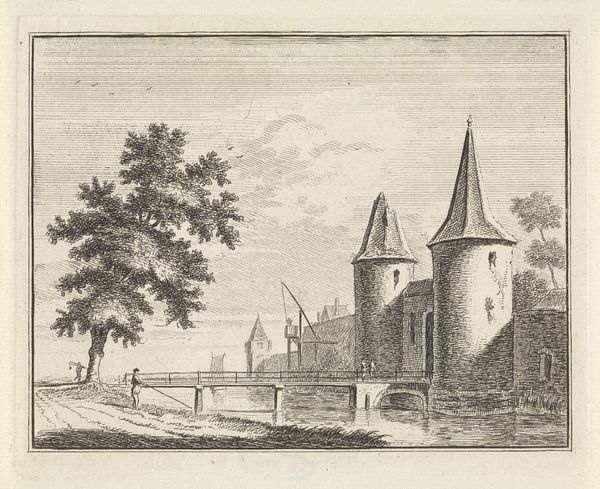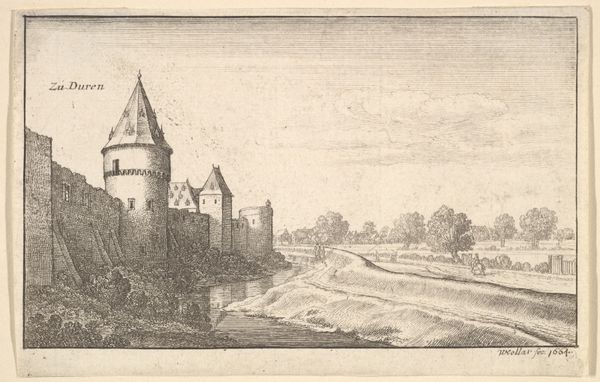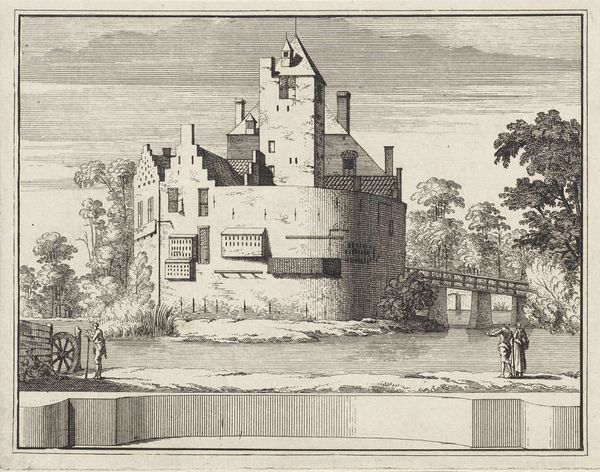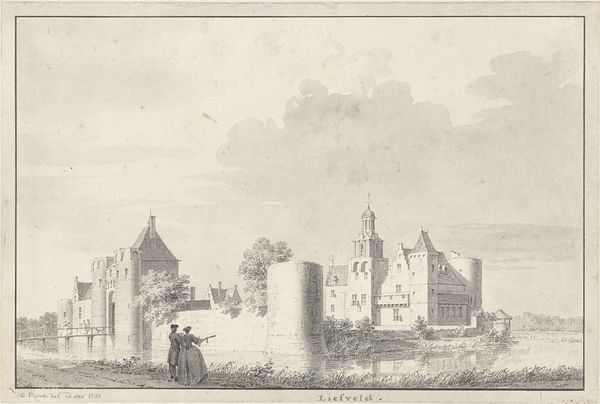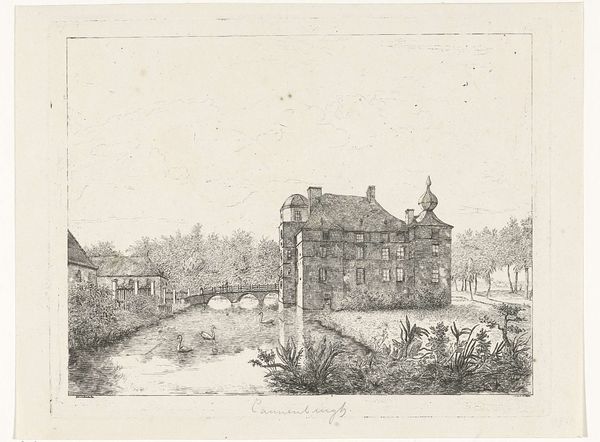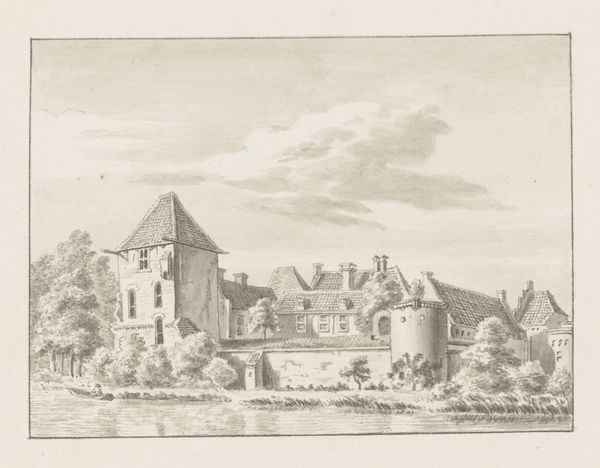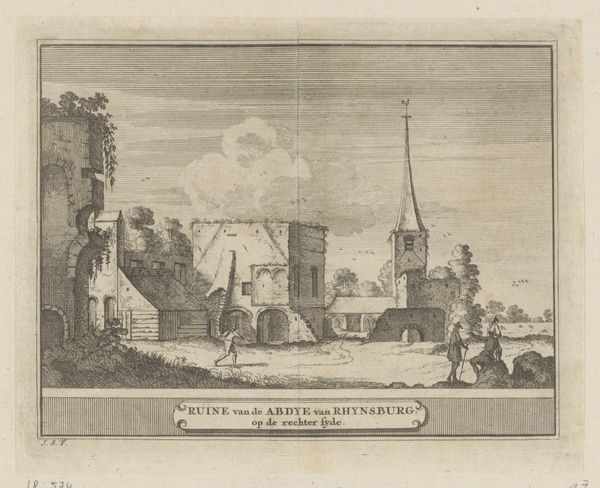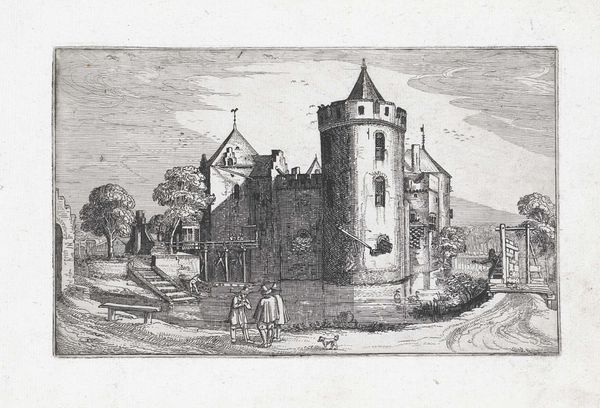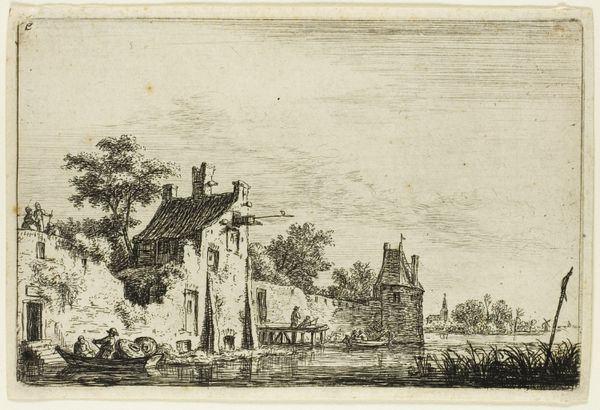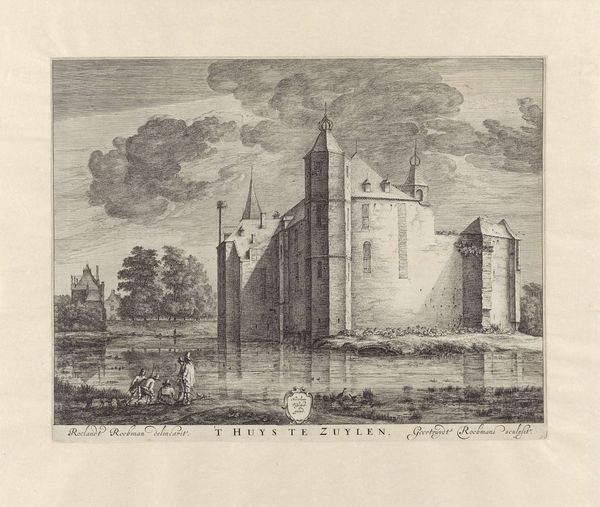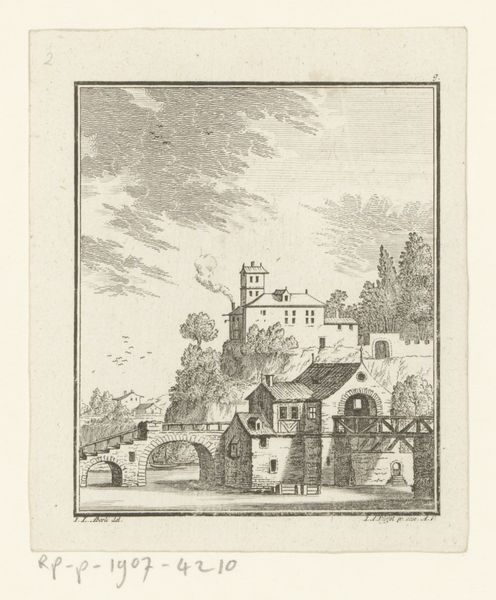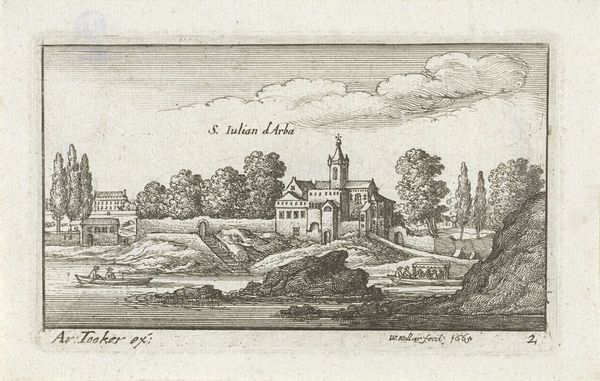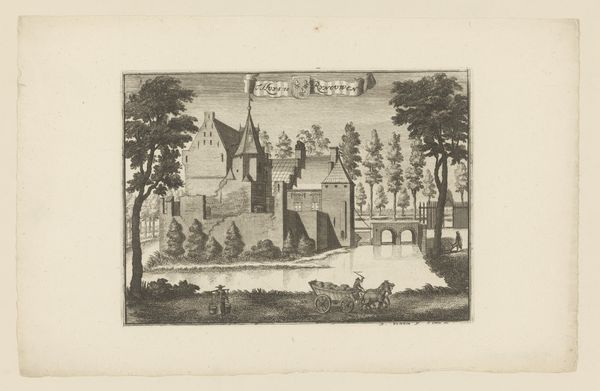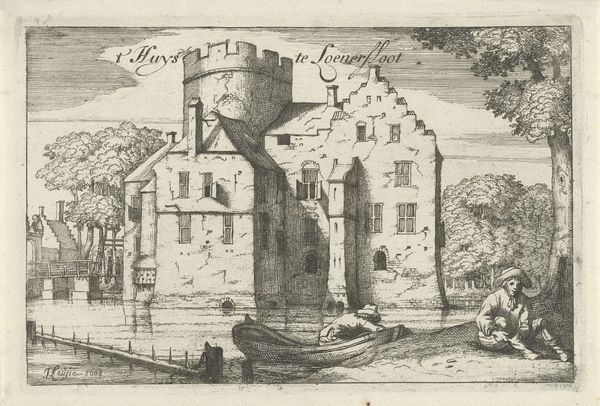
print, engraving
#
aged paper
#
quirky sketch
#
baroque
#
mechanical pen drawing
# print
#
old engraving style
#
sketch book
#
landscape
#
personal sketchbook
#
sketchwork
#
pen-ink sketch
#
sketchbook drawing
#
cityscape
#
storyboard and sketchbook work
#
engraving
Dimensions: height 145 mm, width 179 mm
Copyright: Rijks Museum: Open Domain
Curator: This engraving, “Gezicht op het kasteel te Abcoude,” offers a glimpse of a castle near Amsterdam. The artist, Jacobus Schijnvoet, likely created it sometime between 1711 and 1774. It now resides in the Rijksmuseum. Editor: The image feels so meticulously crafted. It’s almost unsettlingly serene, as if the world exists in suspended animation. I'm struck by how still everything appears; even the water seems frozen in time. Curator: Note how the artist has used the technique of engraving to capture this placid quality. Consider the material properties. Ink and paper provided a means to distribute such imagery across different social spheres. These prints played a key role in disseminating architectural ideas, class distinctions, and geographic information, reinforcing or subverting power structures. Editor: Exactly. The placement of the castle within a detailed landscape invites speculation on themes of power and privilege. This landscape implies both protection and a picturesque view – an ideal position of authority in the social order. Are those two figures on the left visitors or landowners? Curator: They are indeed finely rendered and draw our eye immediately to consider that element of society. But let's not overlook the physical process. Schijnvoet would have needed a burin and significant skill to achieve this level of detail on the copper plate. Each line carefully etched. The labour that went into the distribution process matters. This reminds us how many hands these artworks passed through during their making. Editor: Thinking about access reminds me: whose stories are prioritized in the making of this imagery? Did Schijnvoet grapple with the complexities of the space? Considering the role of the castle historically and in the 18th century, whose lives are omitted, or rather, whose exploitation allowed such tranquility to reign? Curator: Precisely the sort of nuanced point one should keep in mind. Thanks to you, we can look beyond just the picturesque scene and remember the social contexts that influence artistic representation, while still valuing the craft involved. Editor: And hopefully recognize how these past contexts still permeate contemporary conversations about identity, equity, and social mobility today.
Comments
No comments
Be the first to comment and join the conversation on the ultimate creative platform.
